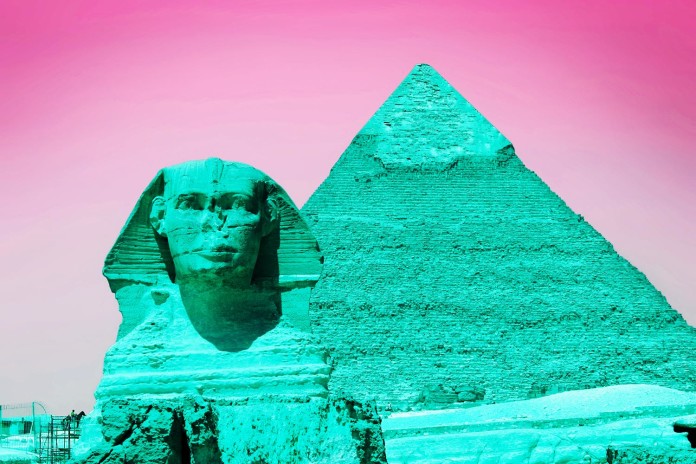
There are great mysteries surrounding the Egyptian Pyramids, and one of them may just be solved. The exploration project Scan Pyramids has just uncovered a bizarre anomaly on the heat signatures in the depths of four of Egypt’s pyramids, including the Great Pyramid of Giza. The project, commanded by the Egyptian Antiquities Ministry, has been using infrared thermography to map through the pyramids of Giza and Dahshur, and these discrepancies open up the question of hidden chambers in the ancient structures.

A lot of hypotheses and possibilities could be drawn up
According to the team, some of the limestone blocks were hotter than others in some of the Great Pyramids of Giza. In a very mysteriously worded statement, the AFP commented that in order to explain these anomalies, a lot of hypotheses and possibilities could be drawn up, such as the presence of ‘voids behind the surface, internal air currents’.
The anomalies were found on the Eastern side of the Khufu pyramid
Specifically, the anomalies were found on the Eastern side of the Khufu pyramid, also known as the Great Pyramid, at the ground level. No further explanation was given for the discrepancies, but the likeliest explanation is the presence of hidden chambers. The team is hoping to make more revelations as the project goes on through the end of 2016. This pyramid, also known as the Great Pyramid of Giza or Cheops, was built between 2575 BC – 2465 BC, and it is the oldest and tallest of the three Giza pyramids and the oldest of the Seven Wonders of the Ancient World. The Great Pyramid of Giza is largely intact, which is probably why researchers have been so careful with what is done in or around it archeologically, but it is obvious that it holds many secrets that must simply be uncovered eventually.

















